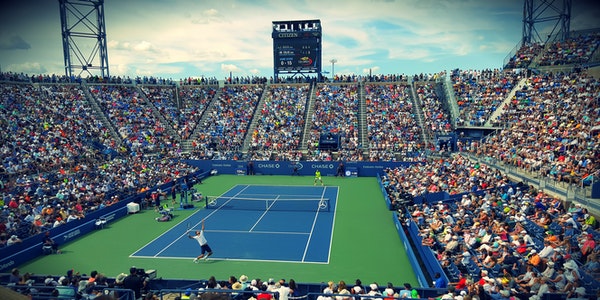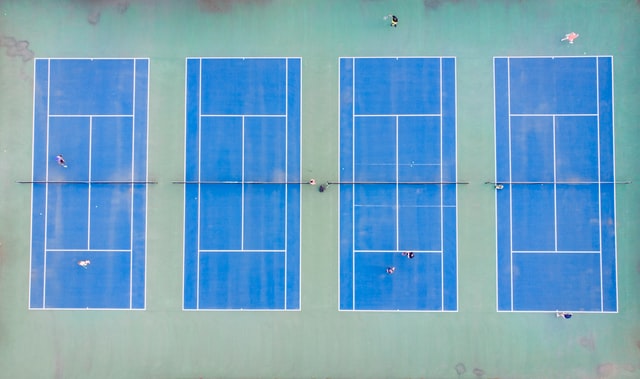Cost to Install Floodlights on Tennis Court
A brief history of tennis development
Tennis was conceived in France, born in the United Kingdom, and was widely developed and reached its climax in the United States. It is a very fun sporting activity.
In 1881, the first national tennis association appeared in the world, the National Lawn Tennis Association of the United States. From August 31 to September 3 of that year, the first American Lawn Tennis Men’s Singles and Men’s Doubles Championships were held in Newport, Rhode Island. The rules of Wimbledon were adopted and 26 people participated in the competition.
In 1891, France held the men’s singles and men’s doubles championships for the first time. Participants were limited to French citizens. Women’s singles began in 1897. In 1904, the Australian Lawn Tennis Association was established and began to host the Australian Championships in 1905, with two events, men’s singles and men’s doubles. In 1922, women’s singles, women’s doubles and mixed doubles were added.
The French Tennis Championships, Wimbledon Tennis Championships, United States Tennis Championships and Australian Tennis Championships together are the most prestigious “Grand Slam” tennis championships in the world. It was not until the 1984 Los Angeles Olympic Games that tennis was listed as a performance event. By the 1988 Seoul Olympics, tennis was again listed as an official event.
With the outstanding performance of a large number of outstanding tennis stars such as Agassi, Sampras, Graf, Federer, Hingis, Williams, Nadal and Haining, the development of tennis has reached unprecedented levels in the world. Its height has become one of the most popular sports.
When building a tennis court, it is essential to understand all the associated costs. Stadium lights and electricity bills to illuminate the stadium during the game have always been one of the most expensive costs for stadiums. Next, to build the auditorium, the installation and maintenance of floodlights are some very important factors. The lighting effect will directly affect the performance of the players and the viewing effect of the audience. At Tachyon, we not only manage lighting installations, but we also design some financial mathematical calculations to provide the best light effect distribution simulation to help you make the best decision when constructing the stadium.
Factors in the total cost of lighting equipment include the quality and type of floodlights, the daily electricity required and the cost of that electricity. For example, a typical community tennis court needs 300 to 400 lux to effectively illuminate the area. If you use a high-pressure sodium lamp, you need 32,000 watts to produce 300 to 400 lux, but if you use an LED flood light, you only need 15,000 watts of power.
Electricity bill
In the United States, the average cost of one kilowatt per hour is 15 cents. If we want to run stadium lights for 6 hours a day every 15 nights in a month, then for metal halide lights, the calculation method will be 32,000 * 0.15 / 1000, and for LED lights, the calculation method will be 15,000 * 0.15 / 1000. The hourly electricity bill for metal halide lamps is $4.8, and the hourly electricity bill for LED lights is $2.25. If you run the lights for 6 hours at night 15 nights a month, the metal halide lamp will cost $342 per month and the LED lamp will cost $203 per month.
Maintenance and installation costs
When comparing high-pressure sodium lamps with LED lamps and their lifetime maintenance costs, LED lamps can easily take an absolute advantage. The service life of LED lamps is 5 times that of high-pressure sodium lamps. When the cost of replacing the lamp is high, this service life can save you a lot of dollars.
For a typical community tennis court, depending on the quality of the lighting, the installation cost of the lighting will be between US$22,000 and US$28,000. If you have to replace stadium lights every 5 years, the total expense will start to increase.
This is why we encourage all customers to invest in LED lights. The initial cost of LED lights is higher, but it will save you hundreds of thousands of dollars in the long run. When we compare the life expectancy of lamps, LED lamps will last for 10 years, while high pressure sodium lamps will last for 2-3 years. The hourly power consumption of LED lamps is only half of that of high-pressure sodium lamps. Although the cost of buying and installing LED lights is higher (the cost of a standard community tennis court is between 22,000 and 28,000 US dollars), in the long run, LED lights will save you more electricity and maintenance fees.
Of course, there are many factors that are not limited to the price of each lamp. This is a deeper discussion about installation, refurbishment, maintenance and where to get the repair costs of tennis court fixtures.
LED vs high pressure sodium lamp
Unless you have seen retrofitted lights in local communities or stadiums in recent years, they may be old high pressure sodium lights. When you see that it takes a while to light up after they are turned on, you can judge that they are high pressure sodium lamps.
The reason is that electricity is used to heat the inert metal in the bulb until it heats up. After a few minutes of heating, the light it emits will be reflected on the reflector of the lamp.
It will take lots of electricity to light these bulbs, which is why the use of high-pressure sodium lamps is much more expensive than the use of LED lamps. And because light needs to be reflected from the bulb instead of directly emitted, a large amount of light may be lost when it leaks to unnecessary places.
When these lights are on, you may also hear a slight buzzing sound. This must be an outdated technology, which has been the norm for tennis courts for decades. Every year, high-pressure sodium lamps lose some light effects.
LED lights are cutting-edge innovations in this field, the same technology you see on computer screens and smartphones. They work the same way, you can turn them on and off immediately, which is different from the old high pressure sodium lamps.
Although the initial cost of LED lights is higher, they consume less energy, and the light source is more stable and has a longer service life. You can easily project light to the entire area on the court, and the uniformity of light can be set according to different levels of competition, from 0.5 for general entertainment to 0.95 to 1.0 for the highest international competition.



